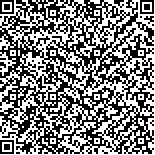| 引用本文: |
董一昕,李腾辉,刘燕,孙天石,张楚焌,黄翔,李卫红.两种脾气虚证模型大鼠临床证候特征的比较[J].湖南中医药大学学报,2020,40(2):150-154[点击复制] |
|
| |
|
|
| 本文已被:浏览 2263次 下载 600次 |
| 两种脾气虚证模型大鼠临床证候特征的比较 |
| 董一昕,李腾辉,刘燕,孙天石,张楚焌,黄翔,李卫红 |
| (北京中医药大学中医学院, 北京 100029) |
| 摘要: |
| 目的 对比研究复合因素法与利血平皮下注射法所致脾气虚证模型大鼠的临床证候特征。方法 将30只雄性SD大鼠随机分为正常组、复合因素组及利血平组,分别采用两种方式造模后,通过一般体征指标及证候量化评分评价临床证候表现;旷场实验评价大鼠心理及自主活动;检测血清D-木糖含量判断消化吸收能力。结果 与正常组相比,两模型组大鼠证候量化评分总积分及各单项均升高(P<0.05,P<0.001),且利血平组各个单项及总积分均高于复合因素组(P<0.05);两组大鼠自主活动均较正常组减少(P<0.05);与复合因素组相比,利血平组穿格次数、中央区停留时间、活动距离下降尤为明显(P<0.001);与正常组相比,两组大鼠血清D-木糖含量均下降(P<0.01),两模型组之间差异无统计学意义(P>0.05)。结论 两种造模方式都可造成大鼠脾气虚证候,但其临床证候表现有所不同,实验时应结合需求进行选择。 |
| 关键词: 脾气虚证 动物模型 复合因素法 利血平 |
| DOI:10.3969/j.issn.1674-070X.2020.02.006 |
| 投稿时间:2019-02-14 |
| 基金项目:北京中医药新奥奖励基金课题(2017-XAJLJJ-002)。 |
|
| Comparison of Clinical Syndromes of Two Spleen-Qi Deficiency Syndrome Models in Rats |
| DONG Yixin,LI Tenghui,LIU Yan,SUN Tianshi,ZHANG Chujun,HUANG Xiang,LI Weihong |
| (School of Traditional Chinese Medicine, Beijing University of Chinese Medicine, Beijing 100029, China) |
| Abstract: |
| Objective To compare the characteristics of clinical syndromes of spleen-Qi deficiency syndromes by compound factor method and reserpine subcutaneous injection method. Methods A total of 30 male SD rats were randomly divided into a normal group, a compound factor group, a reserpine group. After modeling by these two methods, general characteristics of rats and syndrome quantification score was carried out to assess clinical syndromes. Open-field test was operated to evaluate the psychological and autonomous activities of rats. Content of D-xylose in rat serum was detected to evaluate the digestion and absorption function. Results Compared with the normal group, individual and total scores of syndrome quantification in 2 model groups were increased (P<0.05, P<0.001). The scores in the reserpine group were higher than the compound factor group (P<0.05). The spontaneous activity of model rats were reduced than that of the normal group (P<0.05). Compared with the compound factor group, the times of passing through the grille, the duration of staying at the central grille, and the movement distance were decreased significantly in reserpine group (P<0.001). The serum D-xylose content of the model rats was significantly decreased than that of the normal group (P<0.01), but there was no significant difference between the 2 model groups (P>0.05). Conclusion Both model methods can cause spleen deficiency syndrome in rats, but each has its own clinical syndromes, which could be selected according to experimental requirement. |
| Key words: spleen-Qi deficiency syndrome animal model compound factor method reserpine |
|

二维码(扫一下试试看!) |
|
|
|
|




